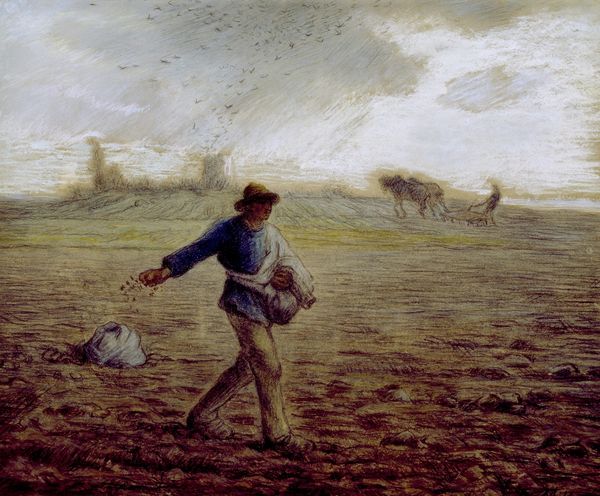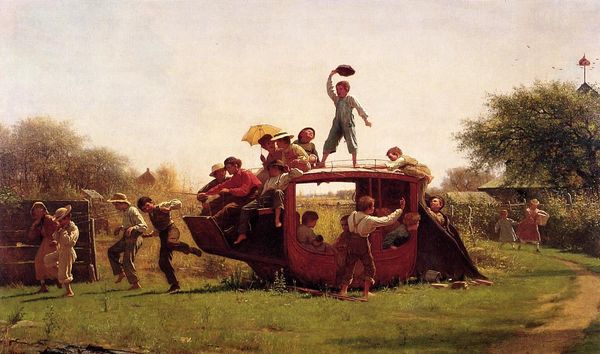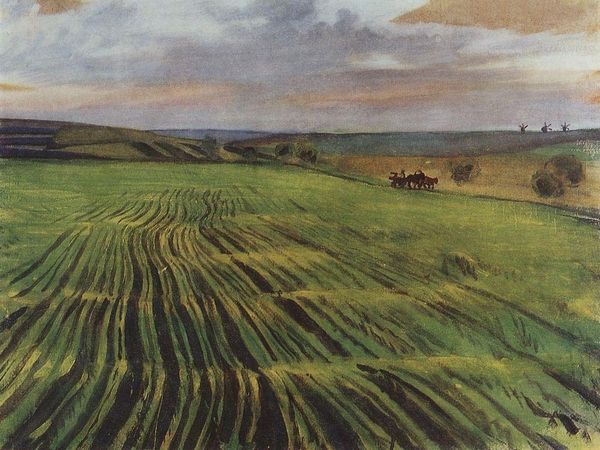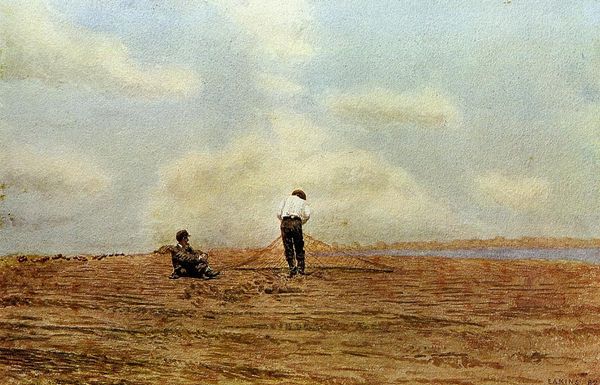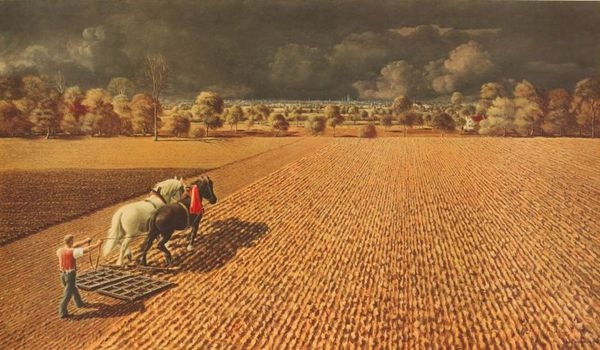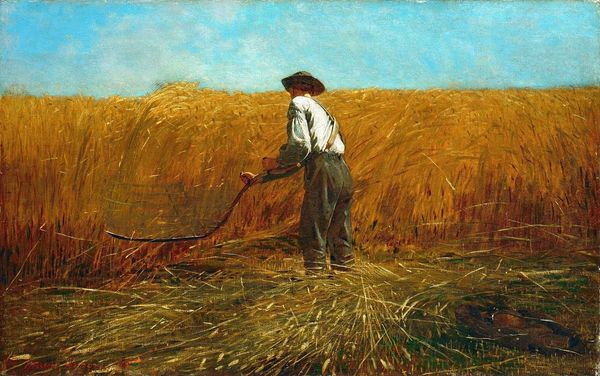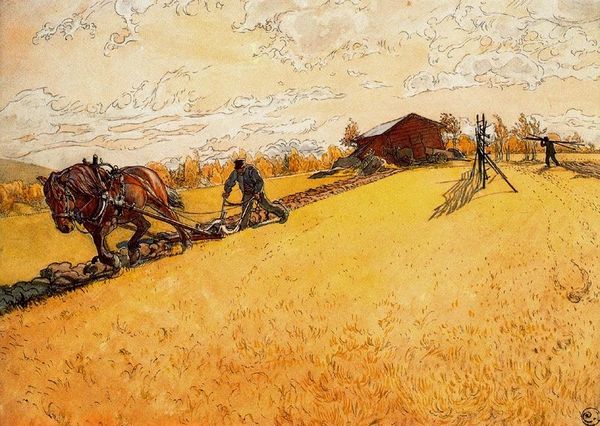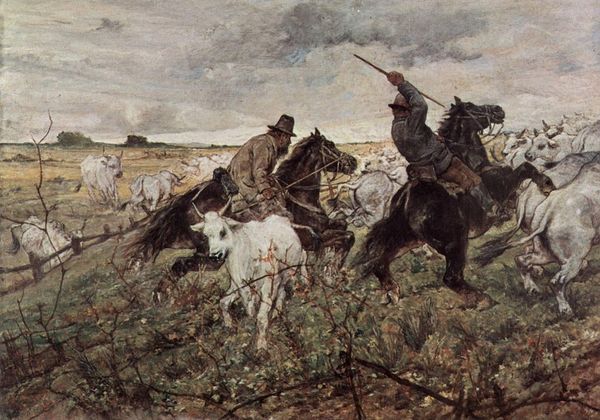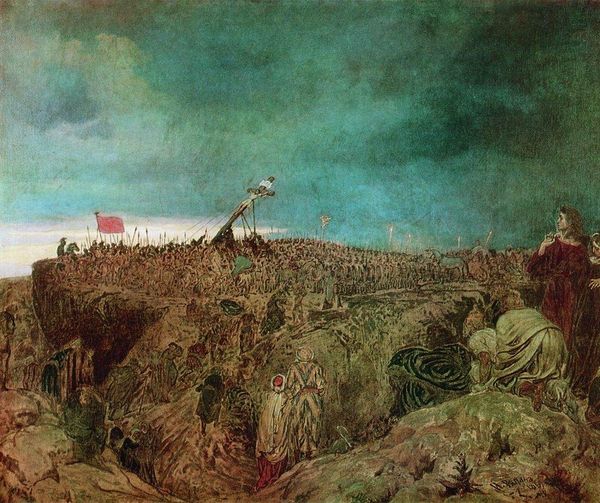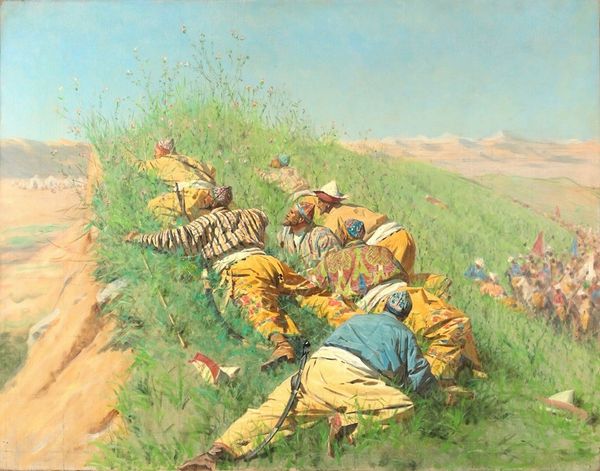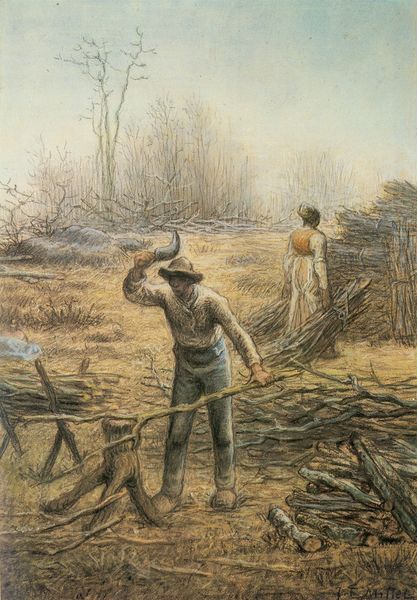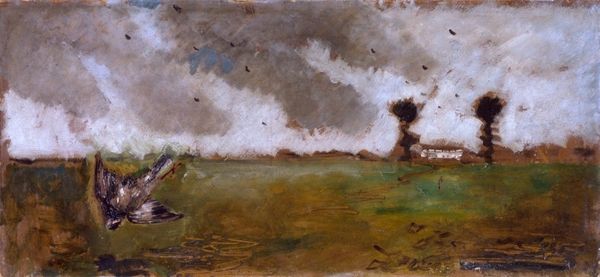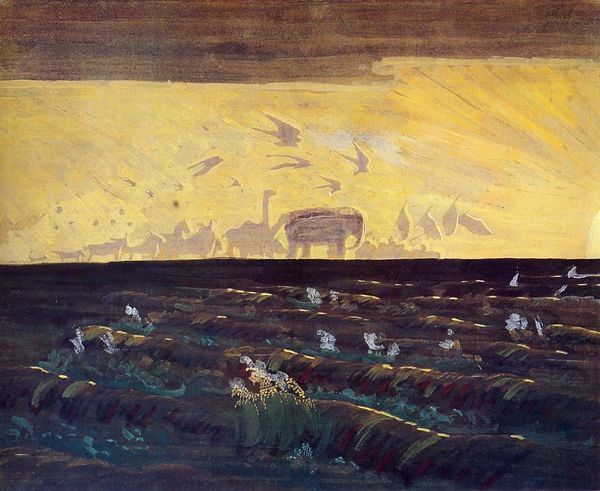
painting, watercolor
#
painting
#
landscape
#
figuration
#
oil painting
#
watercolor
#
history-painting
#
modernism
#
realism
Copyright: Public domain
Editor: Here we have John Singer Sargent’s "Crashed Aeroplane," painted in 1918 using watercolor and oil. It depicts farmers working in a field, seemingly oblivious to a downed aircraft in the background. There is something eerily detached about their labor given the wartime context. How do you interpret this work? Curator: It’s a powerful piece, especially when we consider Sargent's role as a war artist. This painting disrupts the romanticized vision of war often presented. The seemingly indifferent farmers foregrounded against the symbol of technological warfare presents a sharp commentary on the relationship between the home front and the brutality experienced on the battlefield. Consider also that landscape painting often has strong nationalist connections, what is Sargent, an American painting Europeans, telling us here about progress, nation and conflict? Editor: So, you're saying it’s a critique of how detached people were from the realities of World War I? Is it also possible that this disconnect exists because there’s always work to be done? The crops won’t harvest themselves. Curator: Precisely. It also points to a crucial tension – the relentless march of progress embodied by the aeroplane clashing with the timeless cycle of agricultural labor. Are the farmers indifferent or resilient? What does it mean to keep going in the face of constant destruction? Their labor then, as situated during WWI, reads like resistance. Editor: That gives me a new perspective. I hadn't considered the farmers’ actions as a form of resistance. I initially saw them as complacent. Curator: War art invites us to look beyond the surface and confront uncomfortable truths about power, identity, and the human cost of conflict. Hopefully, we can see that art, such as "Crashed Aeroplane," doesn’t simply portray but actively engages in conversations of progress and conflict. Editor: Thanks, I can definitely say I’ve gained a better appreciation for its nuanced message.
Comments
No comments
Be the first to comment and join the conversation on the ultimate creative platform.
